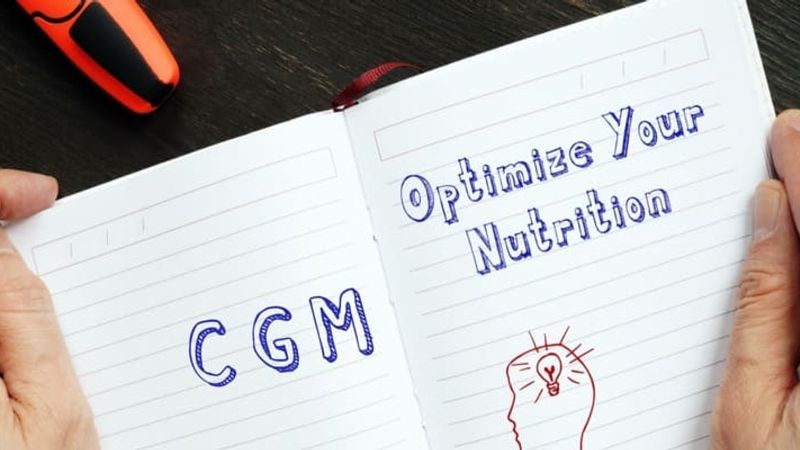

Our Review Process
Our articles undergo extensive medical review by board-certified practitioners to confirm that all factual inferences with respect to medical conditions, symptoms, treatments, and protocols are legitimate, canonical, and adhere to current guidelines and the latest discoveries. Read more.
Our Editorial Team
Shifa Fatima, MSc.
Author
Dr. Apoorva T, MHM.
MEDICAL ADVISOR
Finding Optimum Nutrition with CGM
A glucose monitor shows continuous glucose monitoring (CGM) data. It is a device that continuously monitors glucose levels in the body. The CGM readings provide you with dynamic information about your glucose levels, informing you about your insulin requirements and feedback on your diet. Metabolic health can be improved with the help of CGM. The CGM data gives you information that you can use to determine changes in your nutrition and improve energy utilization.
Table of Contents
Glucose Monitoring & Workout
Ideally, when undertaking low-intensity exercise, one's blood sugar levels should remain stable. The body uses glucose as a fuel, which is already present in the blood and also stored in the body’s fat.
You can use the CGM feedback data to improve your nutrition and workout performance. For example, if your target is to use fats as a source of fuel, then you need CGM feedback to ensure that your blood sugar levels are high throughout your workout.
If the continuous glucose monitoring data shows you that your blood glucose level is suddenly increasing, then this indicates that your body is using stored glycogen as fuel and nutrition. This means that your workout’s intensity increases beyond the fat oxidation capabilities. Generally, fats are a fuel source during low-intensity workouts, while carbohydrates are the source during high-intensity workouts. Also read about normal fasting blood sugar level.
CGM : Data Observations
There are certain results and observations that you should expect from your CGM data which show that your fueling is optimised properly.
1. High Muscular Contraction
If your continuous glucose monitoring data shows that your body uses adequate glucose as fuel, it indicates that your muscles are producing maximum contraction. The muscles can get glucose stored in the form of glycogen in the liver and muscles. Often people observe a rise in glucose levels during sports because glycogen is released into the blood in the form of glucose to supply it to the muscles.
2. Circulating Glucose Levels
Your CGM data will show how much glucose is circulating when you start exercising. This will help you to maintain proper metabolic health while working out. It also gives you a clue whether fueling is necessary during the workout or not.
Circulating glucose is used as a high-intensity energy source. If you are participating in sports and athletics, ensure that you are not starting your day with extremely low blood sugar levels. You do not want to start your event with high blood sugar levels either because it can increase the body’s insulin levels, impairing the ability to utilise fats as a fuel source.
If you are performing a self-paced sport, you should use CGM data to check your performance’s intensity. If you see a rise in blood glucose level, then this is a clue that the glucose is being utilised from your liver as a source of fuel for your muscles.
3. Fats as a Source of Fuel
Extra fueling and nutrition will not help you enhance your performance. This low-intensity exercise, for less than 45 minutes and less than 60% of VO2 max, indicates that the stored fat in your body will be utilised as fuel. If your muscle glycogen is low due to fasting or carbohydrate fasting, then a drop in blood sugar levels can be observed. No fuel is required if the rest of your workout is low intensity. However, only a small amount of carbohydrates can be taken to improve the drop in blood sugar level.
4. Avoid Dips in Sugar Level
The CGM data allows you to improve your workout performance by knowing how food intake affects your blood glucose levels. The data makes you aware that you can maximise your performance without compromising your health.
They can experience hyperglycemia if their blood glucose levels are extremely low. This situation can be avoided by using the CGM data by monitoring the dips in the glucose levels and planning a fueling and nutrition strategy accordingly.
5. Glycemic Variability
Continuous monitoring of glucose data can also help you with glycemic variability. It is a notation used to observe or detect any fluctuations in glucose. An increase in their glycemic variability can be seen if they perform a high-intensity workout or a long-duration low-intensity workout.
CGM : A Good Glucose Measuring Technique
There are many reasons which make CGM data an efficient method to maximise performance and optimise fueling. It is an easier method than other glucose measurement techniques. Before this method, a glucometer was used, but this was not a practical method because the person had to stop working out for the measurement. The CGM method allows you to measure glucose continuously without stopping activities. They show accurate data during intense training. This method helps you increase your performance recovery and optimise pre and post-workout nutrition.
Bottomline
Continuous glucose monitoring data is a valuable tool that helps athletes know about their blood sugar levels during workouts. It enables them to make a better choice for training decisions as well as fuel to maintain proper metabolic health during the workout. It also minimizes the health risks that can be caused due to either high or low blood sugar levels. You can plan a specific diet that meets your energy needs with the help of CGM data. Also know about fasting blood sugar level.

Disclaimer
This website's content is provided only for educational reasons and is not meant to be a replacement for professional medical advice. Due to individual differences, the reader should contact their physician to decide whether the material is applicable to their case.






_1lAR9W.png)
_Z12iaBn.png)
